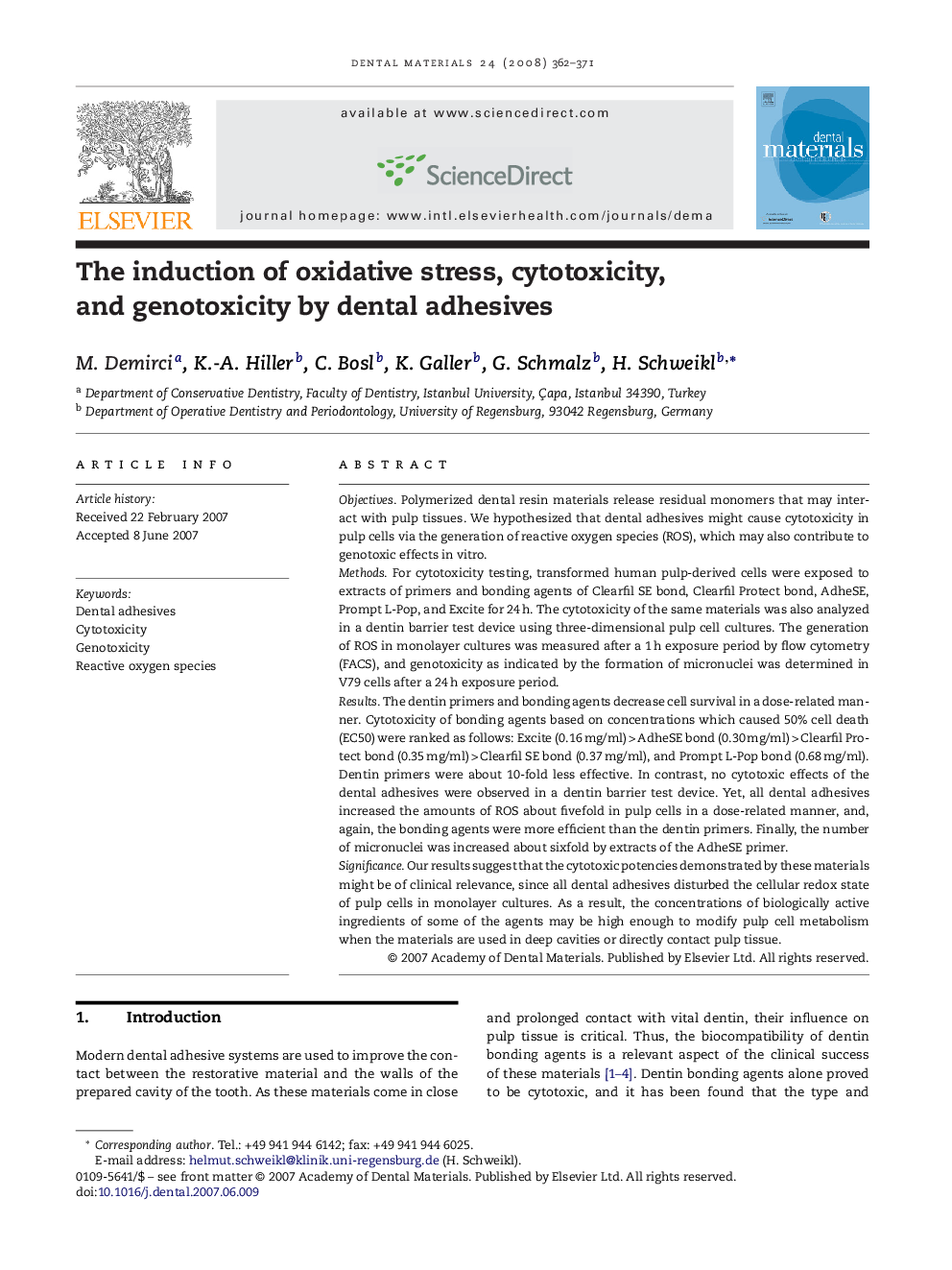| کد مقاله | کد نشریه | سال انتشار | مقاله انگلیسی | نسخه تمام متن |
|---|---|---|---|---|
| 1422681 | 986457 | 2008 | 10 صفحه PDF | دانلود رایگان |

ObjectivesPolymerized dental resin materials release residual monomers that may interact with pulp tissues. We hypothesized that dental adhesives might cause cytotoxicity in pulp cells via the generation of reactive oxygen species (ROS), which may also contribute to genotoxic effects in vitro.MethodsFor cytotoxicity testing, transformed human pulp-derived cells were exposed to extracts of primers and bonding agents of Clearfil SE bond, Clearfil Protect bond, AdheSE, Prompt L-Pop, and Excite for 24 h. The cytotoxicity of the same materials was also analyzed in a dentin barrier test device using three-dimensional pulp cell cultures. The generation of ROS in monolayer cultures was measured after a 1 h exposure period by flow cytometry (FACS), and genotoxicity as indicated by the formation of micronuclei was determined in V79 cells after a 24 h exposure period.ResultsThe dentin primers and bonding agents decrease cell survival in a dose-related manner. Cytotoxicity of bonding agents based on concentrations which caused 50% cell death (EC50) were ranked as follows: Excite (0.16 mg/ml) > AdheSE bond (0.30 mg/ml) > Clearfil Protect bond (0.35 mg/ml) > Clearfil SE bond (0.37 mg/ml), and Prompt L-Pop bond (0.68 mg/ml). Dentin primers were about 10-fold less effective. In contrast, no cytotoxic effects of the dental adhesives were observed in a dentin barrier test device. Yet, all dental adhesives increased the amounts of ROS about fivefold in pulp cells in a dose-related manner, and, again, the bonding agents were more efficient than the dentin primers. Finally, the number of micronuclei was increased about sixfold by extracts of the AdheSE primer.SignificanceOur results suggest that the cytotoxic potencies demonstrated by these materials might be of clinical relevance, since all dental adhesives disturbed the cellular redox state of pulp cells in monolayer cultures. As a result, the concentrations of biologically active ingredients of some of the agents may be high enough to modify pulp cell metabolism when the materials are used in deep cavities or directly contact pulp tissue.
Journal: Dental Materials - Volume 24, Issue 3, March 2008, Pages 362–371